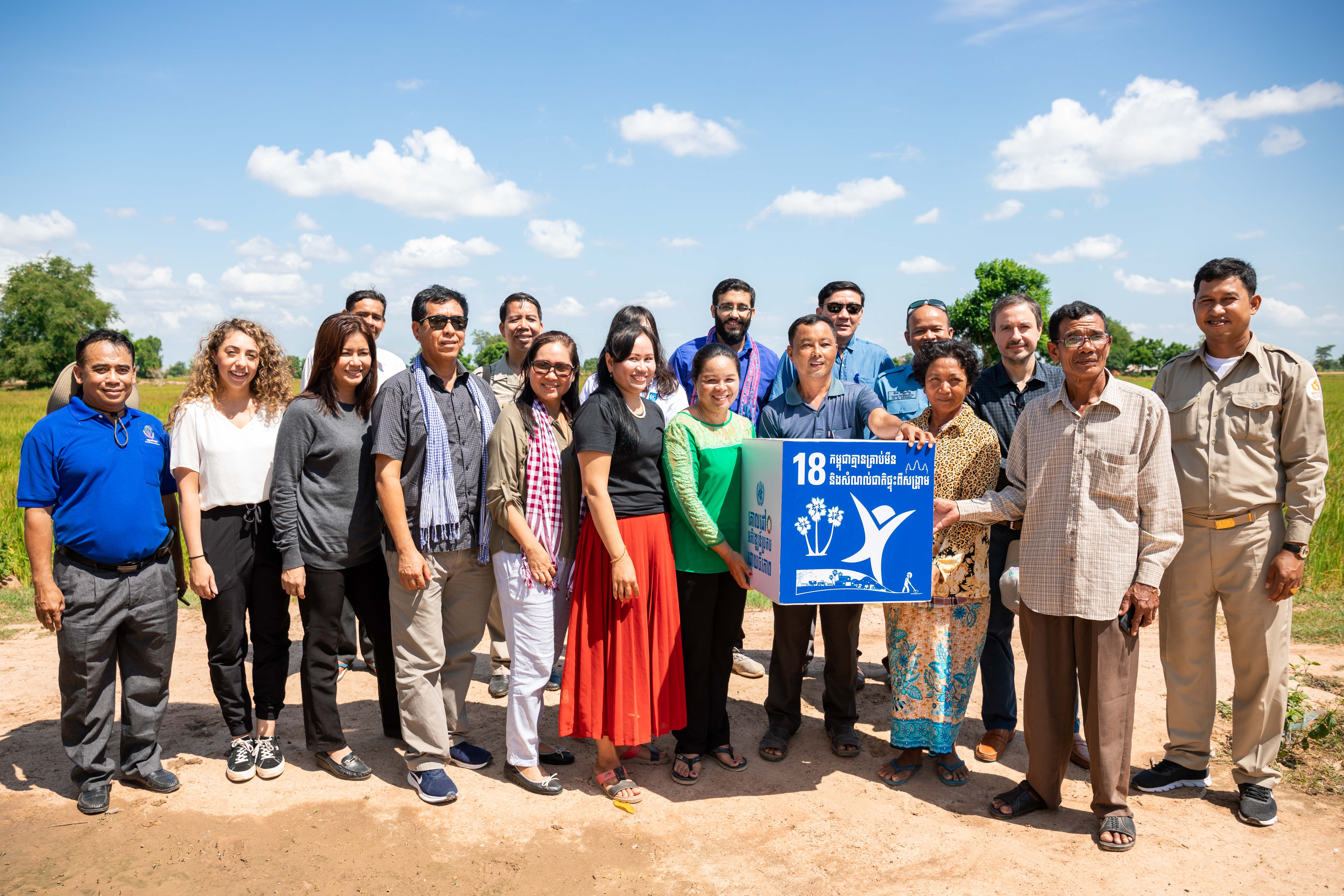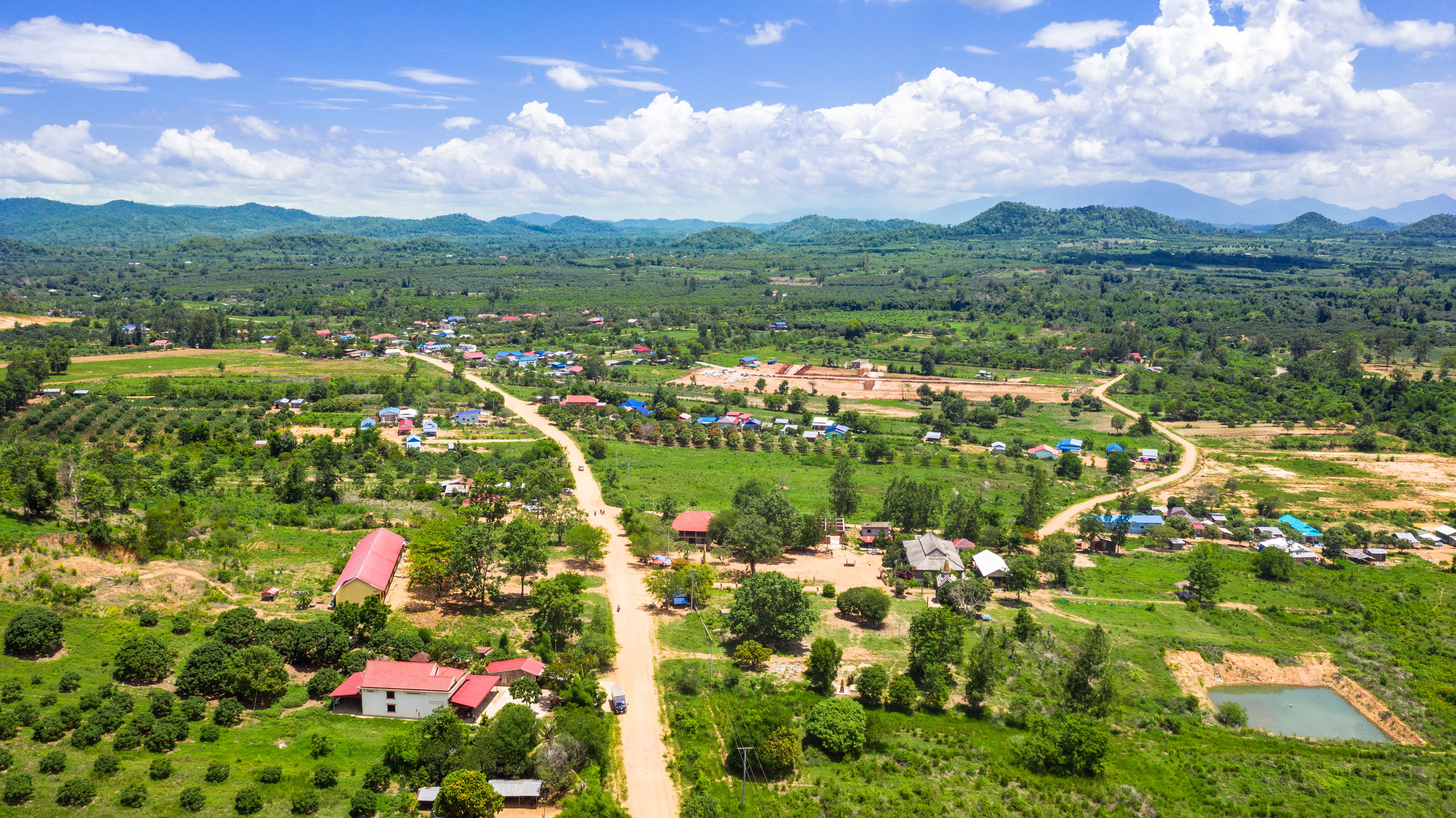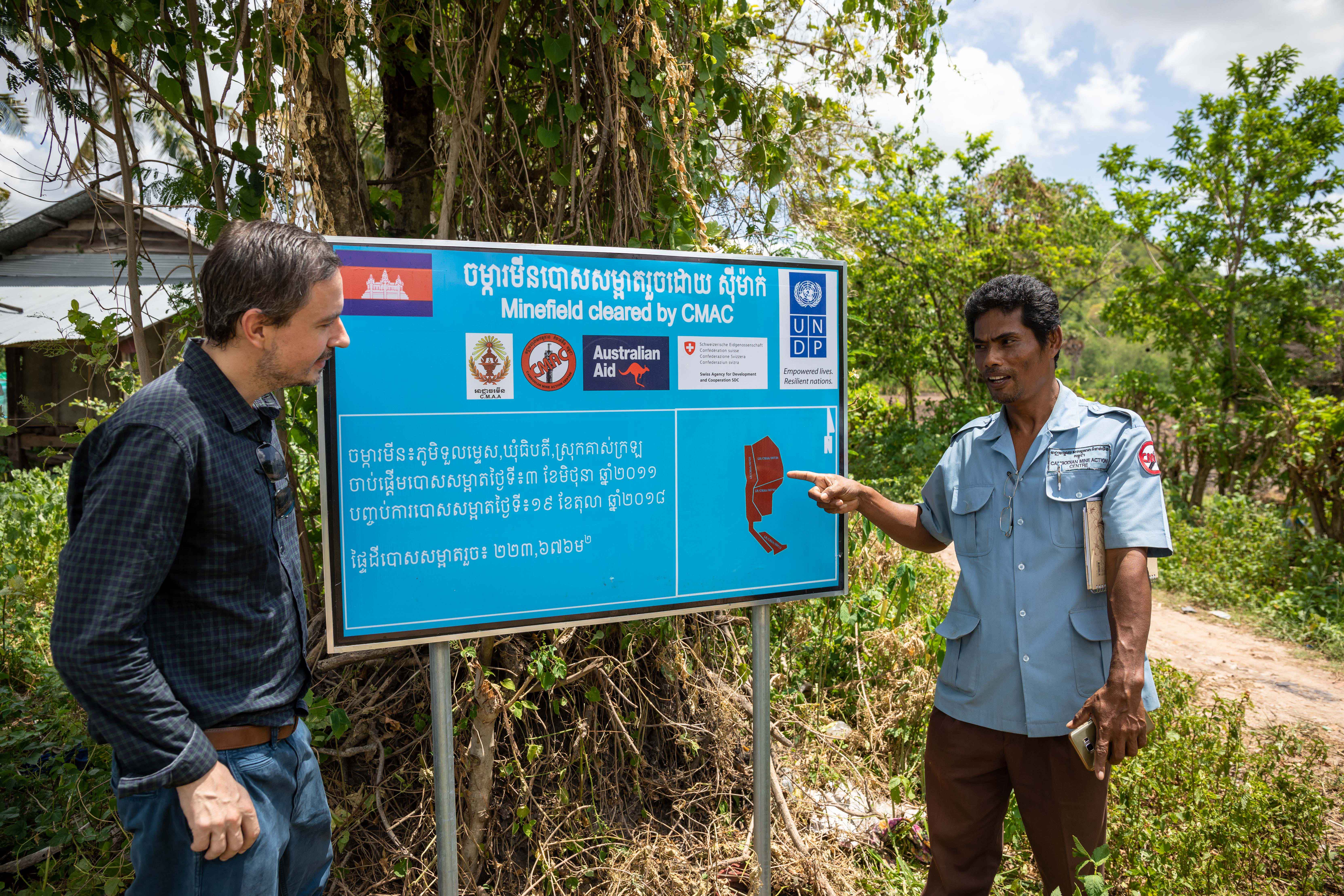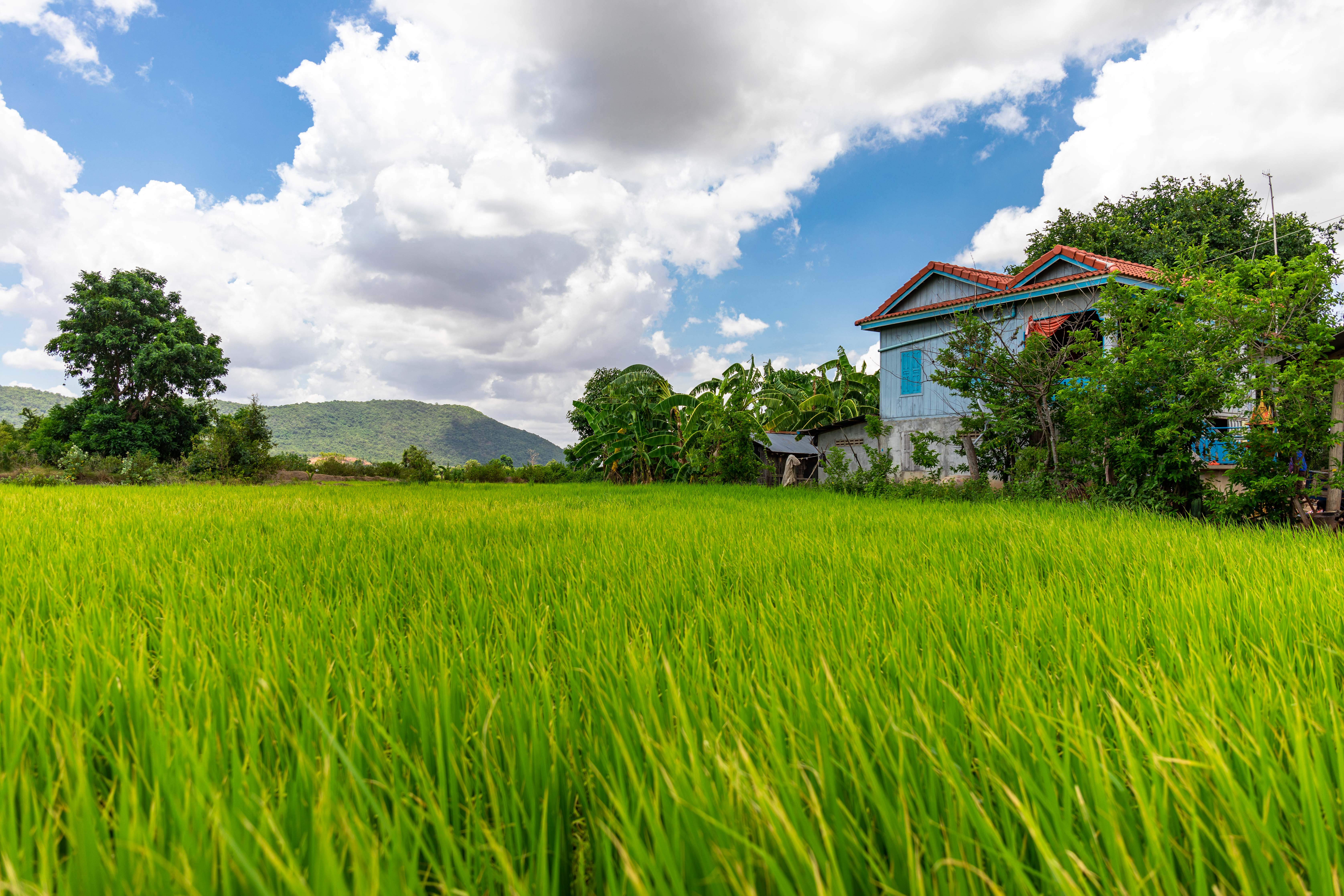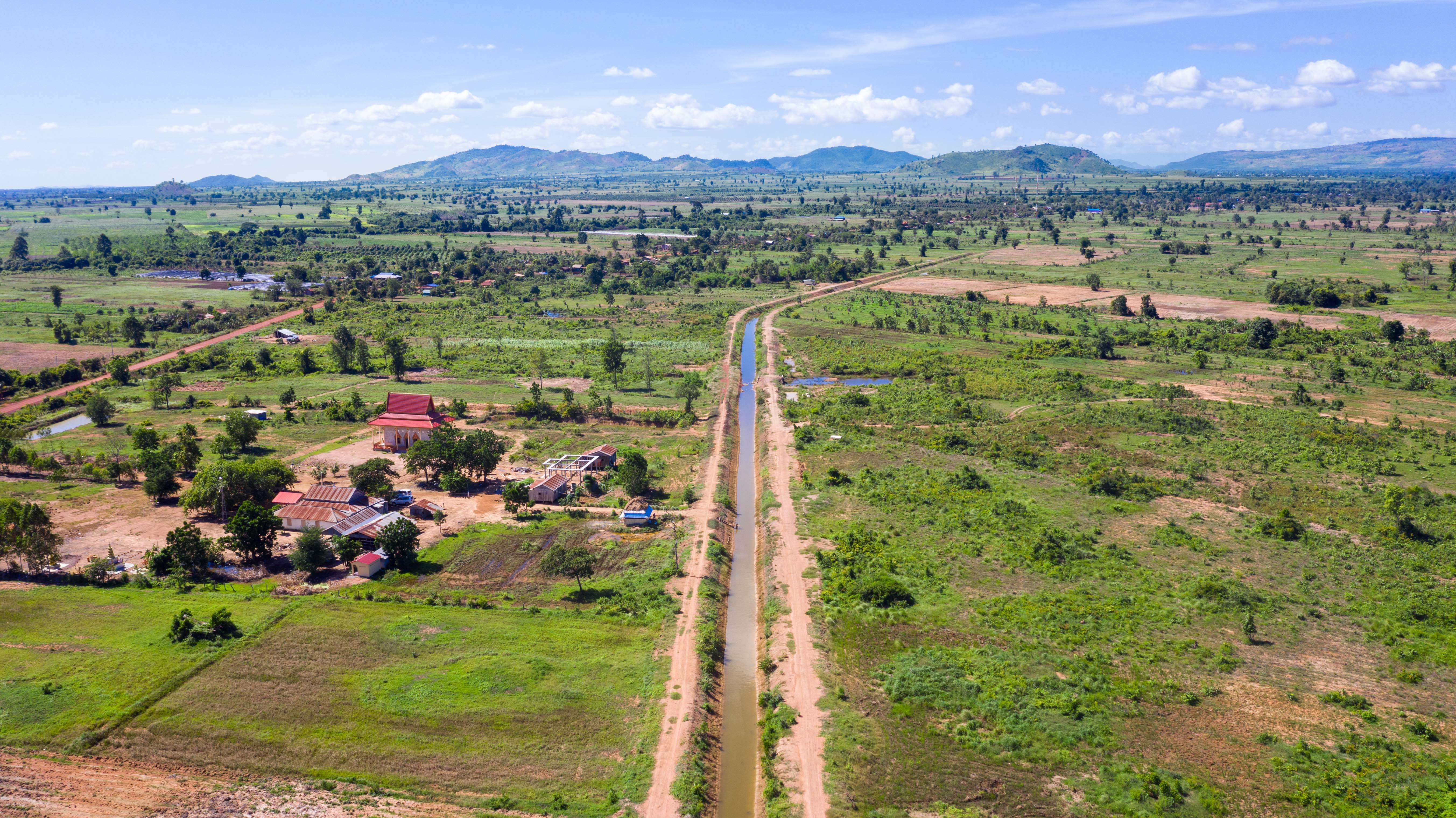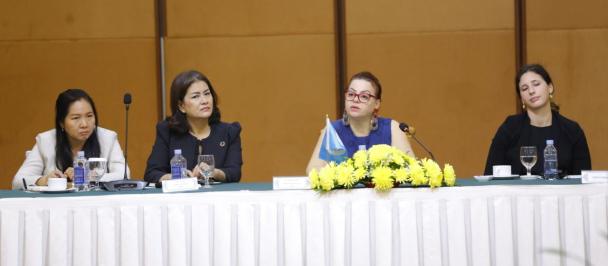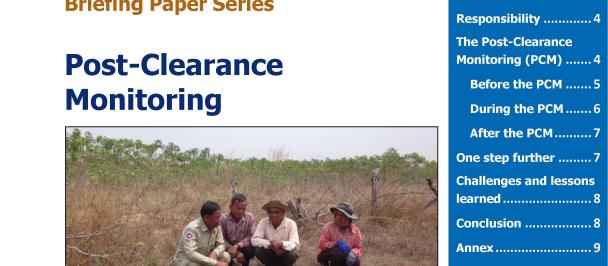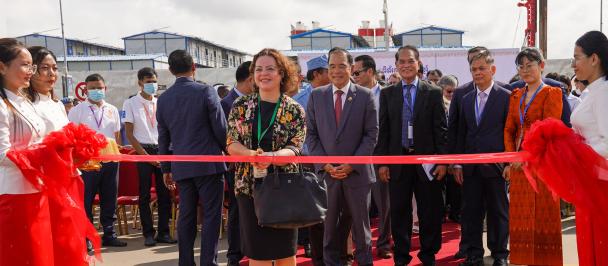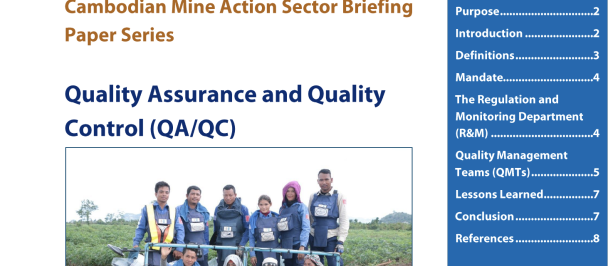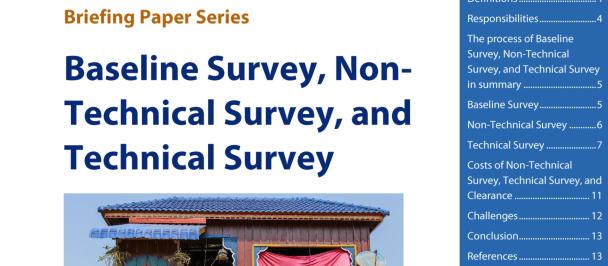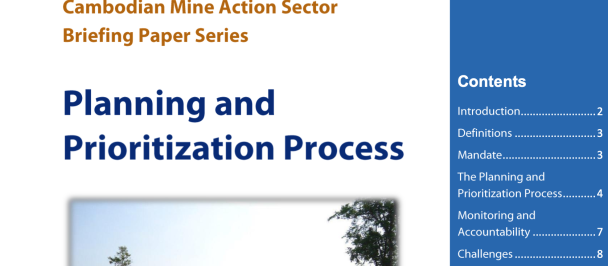Photo: Kimheang Tuon/UNDP Cambodia
The quaint village of Ou Chheu Kram is nestled between lush rice fields bordering Thailand. Today, the growing community is a picturesque illustration of Cambodia’s prosperity. Agricultural expansion and commercial development are vastly improving the socio-economic status of families in the region, with all signs pointing toward continued progress in the foreseeable future.
Prosperity notwithstanding, the pain and trauma synonymous with decades of civil war lingers. This region has vanquished adversity in many respects during the 21 years since conflict resolution brought an end to violence. However, in Ou Chheu Kram, and throughout much of northwest Cambodia, deadly landmines are a stark reminder of the not-too-distant past.
Between the mid-1960s and 1998, Cambodia suffered immense violence. For more than 30 years, civil war, the Khmer Rouge regime, and foreign bombing ravaged the nation, littering the countryside with an estimated four to six million landmines and a million tonnes of ERWs. Despite nation-wide peace in Cambodia, landmines have severely stunted socio-economic growth in several capacities, including agricultural, infrastructural, and urban development. Beyond basic land-use issues, decades of turmoil have strained national and sub-national governance capacities as well.
Aerial shot of Ou Chheu Kram, a small but prospering village near the border of Thailand in Pailin province. Photo: Kimheang Tuon/UNDP Cambodia
In response to this crisis, the Royal Government of Cambodia created the Cambodian Mine Action and Victim Assistance Authority (CMAA) to implement key objectives from the National Strategic Development Plan (NSDP). According to the National Mine Action Strategy 2018-2025, 25 years of demining projects in Cambodia have collectively released more than 1,500 square kilometres of land for productive use. Projects have also found and cleared more than one million anti-personnel mines (APMs), more than 24,000 anti-tank mines, and over 2.6 million items of explosive remnants of war (ERWs). Lastly, the number of landmine-related casualties has consistently fallen from 4,320 annually in 1996 to roughly 100 per year over the last five years. The collective goal of all projects is to ensure there are no land-mine related casualties in Cambodia by 2025.
Since 2006, government-led project, Mine Action for Human Development (MAfHD), has focused their efforts on demining initiatives in Battambang, Banteay Meanchey, and Pailin. This project is also supported by Australia, Canada, Switzerland, and UNDP Cambodia. Representing the regions with the highest concentrations of mine-infected land, the project has released over 230 square kilometres of mine-contaminated land for productive use by the affected communities. Aside from releasing land for agricultural and development use, MAfHD aims to increase technical and infrastructural capacity in affected communities through education-based transitional programs.
A CMAC employee illustrates the areas most impacted by landmines in Tuol Mtes village in Battambang province. Photo: Kimheang Tuon/UNDP Cambodia
Cambodia’s impressive approach towards addressing mine-contaminated land is a poignant example of resilience following a sustained period of destruction. However, to propel Cambodia forward in the name of sustainable progress, we must view this beautiful and complex nation through a nuanced lens that considers today’s most pressing concerns in conjunction with yesterday’s trauma.
The families I spoke to about the MAfHD project expressed their own version of challenges and triumphs; however, the issue of climate change was virtually ubiquitous within all villages I visited. Generally speaking, most farmers cited the project as widely successful in increasing their annual crop yield, and therefore boosting their household income. Despite the project’s success, dry and parched soil, a lack of rainfall, and scorching temperatures are imposing additional hurdles for rural communities to overcome.
In Ou Chheu Kram, demining initiatives led to the expansion of cassava production. Directly following the release of viable land, the average cassava yield was 60-70 tonnes per hectare. Today, it’s sitting at around 10 tonnes per hectare. Village Chief, Oak Nyan explained that the reduction in agricultural output stems from diminished land fertility. An initiative led by the Department of Agriculture is working with the Ou Chheu Kram community to develop agricultural skills that are conducive to a rapidly changing climate. Efforts aside, the climate crisis and global heating are impeding uninterrupted agricultural growth in this region of Cambodia.
Agricultural expansion is a direct benefit from the Mine Action for Human Development project. Photo: Kimheang Tuon/UNDP Cambodia
Augmenting the effects of the climate crisis, some rural families in this region are faced with crippling amounts of debt. During the midterm project assessment for MAfHD, most households were found to have incurred significant debt with high interest rates—41.1 percent of rural households are in debt, with an average interest rate of almost 30 percent per year— to invest in agricultural capital. Project coordinators are addressing this issue by analysing the entire agricultural supply chain, to ensure land is both safe and effective for rural families. Safe and effective land will contribute to a reduction in poverty and improve overall development outcomes in target communities.
For example, increased land value in Tuol Mtes has doubled the household income Pheng Phuet receives from her tenants. Regardless, several loans from microfinanciers—used to purchase crops and fertiliser—means she’s mostly breaking even and struggling to pay down her debt.
This story is not unique. In Phteah Sbov, 70-80 percent of the population is working in Thailand. Released land has increased the agricultural industry in many respects, but debt and the effects of climate change are pushing Cambodians over the border to earn additional income for their families.
According to community members from Pteah Sbov, there is no shortage of agricultural labour in this region. Families with larger plots of land, with areas that may not be conducive for agricultural development, are selling released land to developers from other communities, enabling families with more disposable income to contribute to economic and social growth. Meanwhile, in Tuol Mtes, released land has led to the development of irrigation systems, community centres, a health centre, and improved urban planning.
Released land means improved urban planning and socio-economic development in Cambodia’s northwest region. Photo: Kimheang Tuon/UNDP Cambodia
The profound level of growth is undeniable; however, Cambodia’s onerous past adds yet another nuance to consider, specifically regarding the northwest region of the country. In Ou Chheu Kram, 70 families established the village in 1998. Some families migrated from Battambang, while most families settling in the area are descendants from the Khmer Rouge regime. While demining projects have stimulated socio-economic growth in more ways than one, trauma reconciliation has no official grounding in this region. That is not to say unofficial reconciliation has not materialized in some capacity, or that real progress has not transpired, but it is important to acknowledge Cambodia’s wounds when thinking about solutions for the future. What are general sentiments concerning reconciliation in this region? More to the point, what does reconciliation and healing look like for these communities? These are questions we should be asking ourselves, as Cambodia pushes forward toward a bright and hopeful future.
As part of the project’s due diligence in assessing the progress of Mine Action, regular visits to mine-infected communities are mandatory. The purpose of this year’s visit was to understand how mine clearance in 2018 has helped affected villages, and to understand the challenges communities continue to face daily. This article is the third publication in a three-part series that attempts to shed some light on the challenges facing these communities. Although some specific topics were discussed, it is imperative to remember that social and economic development in Cambodia, like in many countries, is extremely nuanced. The positive outcomes from 20 plus years of mine clearing projects are obvious, as released land has led to meaningful change for these communities. Additional income, increased access to education, and agricultural skill development have generated GDP growth, and therefore stimulated progressive social change for Cambodians in this region. However, like any complex situation facing a nation, attributing poverty to one specific issue does not generate a comprehensive and sustained solution.
To read the first article on socio-economic developments, click here.
To read the second article, which illustrates the stories of women from these communities, click here.
For more information on projects currently on the UNDP docket, click here.
Author: Cassandra Jeffery

 Locations
Locations